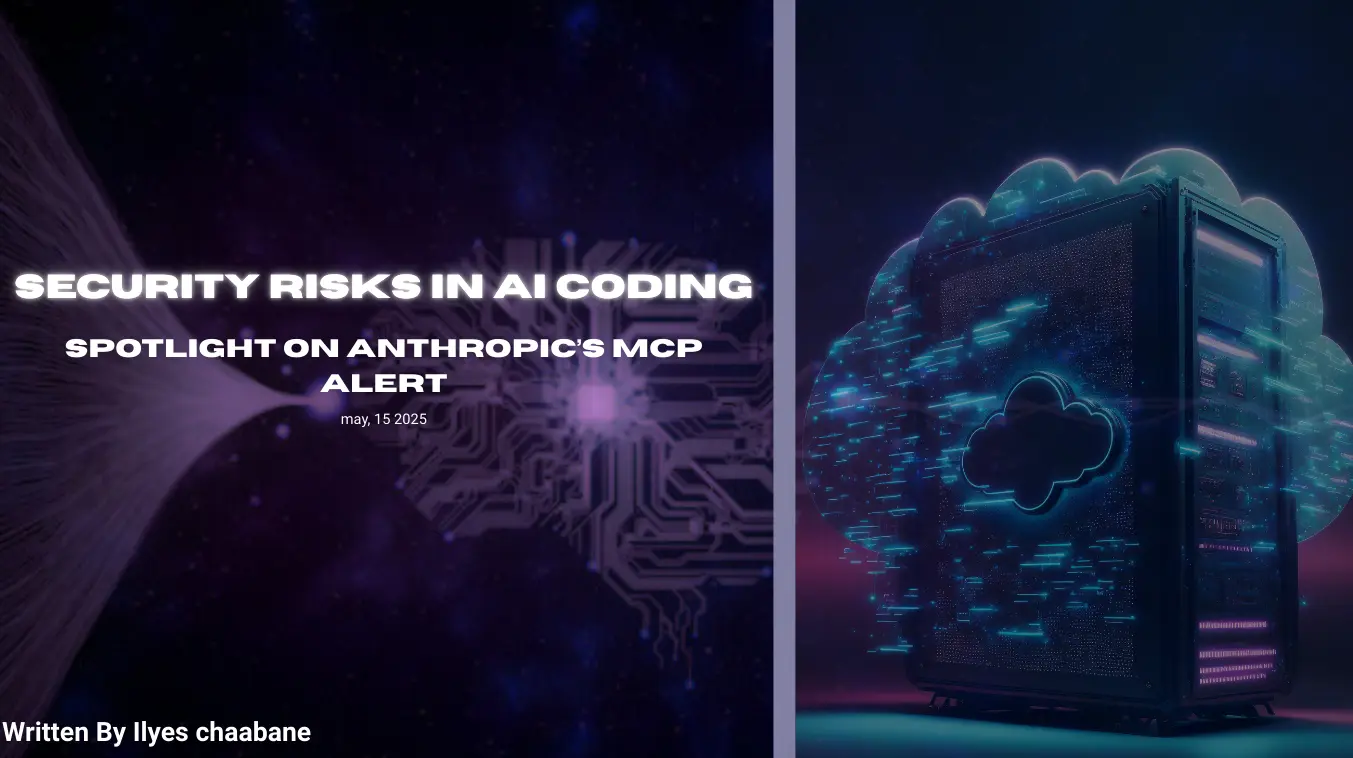
Security Risks in AI Coding: Spotlight on Anthropic’s MCP Alert
3 min read
Introduction
Artificial intelligence (AI) is revolutionizing software development, automating everything from boilerplate generation to complex debugging. Central to this transformation are large language models (LLMs) that tap into external tools and data sources via standardized interfaces—one of the most prominent being Anthropic’s Model Context Protocol (MCP). While MCP promises seamless integrations, it also introduces fresh security challenges that every engineering team must address.
What Is the Model Context Protocol (MCP)?
Anthropic developed MCP to streamline how LLMs invoke external services—authentication servers, databases, cloud functions, and more—through a unified API layer. In theory, MCP:
- Open Bindings
-
Default to 0.0.0.0: Some MCP server implementations bind to all network interfaces by default, exposing management APIs to the public internet.
-
Risk: Attackers can discover and query your MCP tools, potentially harvesting sensitive metadata or invoking privileged actions.
- Lax Input Validation
-
No Schema Enforcement: Without strict checks, malicious payloads can slip through unchecked.
-
Risk: An attacker might craft inputs that exploit deserialization bugs or trigger unintended code paths in downstream services.
- Version Drift
-
Unpinned Dependencies: Running mixed versions of MCP clients and servers can open compatibility gaps.
-
Risk: Older server versions may harbor unpatched vulnerabilities, while mismatched schemas lead to logic errors or injection points.
- Insufficient Logging and Monitoring
-
Silent Failures: If your MCP layer swallows errors or lacks detailed logs, you won’t notice when an attacker probes or tweaks tool descriptors.
-
Risk: Undetected lateral movements, data exfiltration, or privilege escalations within your AI-driven workflows.
Real-World Consequences
Imagine an AI agent responsible for provisioning virtual machines in your cloud environment. If an attacker gains MCP access, they could:
-
Spin up costly instances under your account.
-
Install cryptominers or backdoors on newly created servers.
-
Retrieve IAM tokens or service account keys for deeper penetration.
Even seemingly benign developer tools—like code-formatters or documentation generators—can act as stealthy beachheads if left exposed.
Recommended Mitigations
To harden your MCP deployments, security experts at Security Boulevard advise a multi-layered approach:
- Bind to Loopback or Private Subnets
-
Restrict MCP servers to 127.0.0.1 or internal VPC IPs.
-
Use firewall rules or security groups to block unauthorized traffic.
- Enforce Strict Input Validation
-
Define and validate JSON schemas for every tool descriptor and payload.
-
Reject or log anomalous requests immediately.
- Pin and Audit Versions
-
Lock MCP client/server dependencies in your build pipelines.
-
Regularly review changelogs for security patches or breaking changes.
- Sanitize Tool Descriptors
-
Avoid embedding sensitive URLs or credentials in descriptors.
-
Store secrets in dedicated vaults, referencing them via secure identifiers.
- Implement Robust Logging and Alerting
-
Log all MCP invocations with timestamps, client IDs, and payload hashes.
-
Feed logs into SIEM tools to detect unusual patterns or spikes.
By combining network restrictions, rigorous validation, and vigilant monitoring, you can reduce the risk of unauthorized access and maintain a strong defense-in-depth posture.
Best Practices for AI-Driven Workflows
- Beyond securing MCP itself, consider these broader safeguards:
Least Privilege: Grant each AI agent only the minimum permissions it needs.
-
Code Reviews for Descriptors: Treat tool descriptor files like code—peer-review changes and track them in version control.
-
Periodic Pen-Testing: Simulate attacks against your MCP endpoints to uncover hidden misconfigurations.
-
Incident Playbooks: Define clear steps for isolation, forensic analysis, and recovery if an MCP breach is suspected.
Conclusion
Anthropic’s Model Context Protocol has unlocked powerful possibilities for AI-enhanced development, but it also raises the stakes for security teams. By recognizing potential attack surfaces—open bindings, lax validation, version drift, and silent failures—and following best practices from Security Boulevard and community wisdom, engineering organizations can harness MCP’s benefits safely. As with any emergent technology, the key is balance: embrace innovation, but never at the expense of robust security.
Key Words:
Agentic AIAi AgentsAi takeover meta vibe codingSoftware